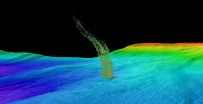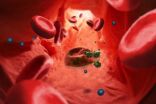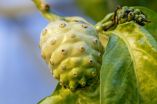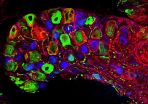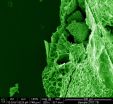INFORMATION:
Media contact:
Verity Leatherdale: +61 9351 4312, +61 403 067 342 or verity.leatherdale@sydney.edu.au
Professor Frank Seebacher: +61 456 892 824
How pace of climate change will challenge ectotherms
2014-12-09
(Press-News.org) Animals that regulate their body temperature through the external environment may be resilient to some climate change but not keep pace with rapid change leading to potentially disastrous outcomes for biodiversity.
A study by the University of Sydney and University of Queensland showed many animals can modify the function of their cells and organs to compensate for changes in the climate and have done so in the past, but the researchers warn that the current rate of climate change will outpace animals' capacity for compensation (or acclimation).
The research has just been published in Nature Climate Change (Letters), written by Professor Frank Seebacher from the University of Sydney's School of Biological Sciences and Professor Craig Franklin and Associate Professor Craig White from the University of Queensland.
Adapting to climate change will not just require animals to cope with higher temperatures. The predicted increase to fluctuations in temperature as well as to overall temperature would require animals to function across a broader range of conditions.
This is particularly important for ectotherms, animals that rely on external sources of heat to control body temperature, and are therefore more influenced by environmental temperatures.
The research showed that many groups of ectotherms, which make up more than 90 percent of all animals, are able to change their physiological function to cope with an altered environment, but the rapid pace and fluctuations of human-induced climate change present serious challenges.
The researchers studied 40 years of published data to assess how biological functions change in response to a sudden fluctuations in environmental temperatures.
They found that the physiological rates of ectothermic animals, such as heart rate, metabolism and locomotion, had increased already over the past 20 years with increasing average temperatures.
"It is important that animals maintain the right balance between the large number of physiological functions despite environmental fluctuations. An increase in temperature that leads to changed reaction rates can upset that balance and cause the decline of individuals and species," said Professor Seebacher.
"For example, movement requires energy and oxygen to be delivered to muscles. However, if metabolism or the cardiovascular system can't cope with increased temperatures, animals can no longer move to forage, migrate or interact with each other.
"The overall trend in the last 20 years has been to increased physiological rates, and we predict that this would continue to increase with increasing temperature.
"Even if animals are able to maintain the balance of their physiological functions in a warmer climate, increased metabolism leads to increases in the food resources needed and could upset the balance in ecosystems, particularly if predator and prey populations respond very differently to the environmental temperature change."
ELSE PRESS RELEASES FROM THIS DATE:
Common chemotherapy is not heart toxic in patients with BRCA1/2 mutations
2014-12-09
SAN ANTONIO -- Use of anthracycline-based chemotherapy, a common treatment for breast cancer, has negligible cardiac toxicity in women whose tumors have BRCA1/2 mutations -- despite preclinical evidence that such treatment can damage the heart.
The findings, to be presented at the 2014 San Antonio Breast Cancer Symposium (SABCS), represent a unique effort between cardiologists and oncologists at Georgetown Lombardi Comprehensive Cancer Center and MedStar Heart & Vascular Institute in Washington to answer a vital clinical question.
"Our study was prompted by evidence from ...
Three new Myriad studies highlighted at 2014 San Antonio Breast Cancer Symposium
2014-12-09
SALT LAKE CITY, Utah, Dec. 9, 2014 - Myriad Genetics, Inc. (NASDAQ: MYGN) today announced results from a new study that demonstrated the ability of the myRisk™ Hereditary Cancer test to detect 105 percent more mutations in cancer causing genes than conventional BRCA testing alone. The Company also presented two key studies in triple negative breast cancer (TNBC) that show the myChoice™ HRD test accurately predicted response to platinum-based therapy in patients with early-stage TNBC and that the BRACAnalysis® molecular diagnostic test significantly predicted ...
Temperature anomalies are warming faster than Earth's average
2014-12-09
BLOOMINGTON, Ind. -- It's widely known that the Earth's average temperature has been rising. But research by an Indiana University geographer and colleagues finds that spatial patterns of extreme temperature anomalies -- readings well above or below the mean -- are warming even faster than the overall average.
And trends in extreme heat and cold are important, said Scott M. Robeson, professor of geography in the College of Arts and Sciences at IU Bloomington. They have an outsized impact on water supplies, agricultural productivity and other factors related to human health ...
Warmer Pacific Ocean could release millions of tons of seafloor methane
2014-12-09
Off the West Coast of the United States, methane gas is trapped in frozen layers below the seafloor. New research from the University of Washington shows that water at intermediate depths is warming enough to cause these carbon deposits to melt, releasing methane into the sediments and surrounding water.
Researchers found that water off the coast of Washington is gradually warming at a depth of 500 meters, about a third of a mile down. That is the same depth where methane transforms from a solid to a gas. The research suggests that ocean warming could be triggering the ...
Long-term endurance training impacts muscle epigenetics
2014-12-09
A new study from Karolinska Institutet in Sweden shows that long-term endurance training in a stable way alters the epigenetic pattern in the human skeletal muscle. The research team behind the study, which is being published in the journal Epigenetics, also found strong links between these altered epigenetic patterns and the activity in genes controlling improved metabolism and inflammation. The results may have future implications for prevention and treatment of heart disease, diabetes and obesity.
"It is well-established that being inactive is perilous, and that regular ...
Nanotechnology against malaria parasites
2014-12-09
Malaria parasites invade human red blood cells; they then disrupt them and infect others. Researchers at the University of Basel and the Swiss Tropical and Public Health Institute (Swiss TPH) have now developed so-called nanomimics of host cell membranes that trick the parasites. This could lead to novel treatment and vaccination strategies in the fight against malaria and other infectious diseases. Their research results have been published in the scientific journal ACS Nano.
For many infectious diseases no vaccine currently exists. In addition, resistance against ...
Toxic fruits hold the key to reproductive success
2014-12-09
This news release is available in German.
In the course of evolution, animals have become adapted to certain food sources, sometimes even to plants or to fruits that are actually toxic. The driving forces behind such adaptive mechanisms are often unknown. Scientists at the Max Planck Institute for Chemical Ecology in Jena, Germany, have now discovered why the fruit fly Drosophila sechellia is adapted to the toxic fruits of the morinda tree. Drosophila sechellia females, which lay their eggs on these fruits, carry a mutation in a gene that inhibits egg production. ...
Stain every nerve
2014-12-09
Scientists can now explore nerves in mice in much greater detail than ever before, thanks to an approach developed by scientists at the European Molecular Biology Laboratory (EMBL) in Monterotondo, Italy. The work, published online today in Nature Methods, enables researchers to easily use artificial tags, broadening the range of what they can study and vastly increasing image resolution.
"Already we've been able to see things that we couldn't see before," says Paul Heppenstall from EMBL, who led the research. "Structures such as nerves arranged around a hair on the skin; ...
New treatment strategy for epilepsy
2014-12-09
Researchers found out that the conformational defect in a specific protein causes Autosomal Dominant Lateral Temporal Lobe Epilepsy (ADLTE) which is a form of familial epilepsy. They showed that treatment with chemical corrector called "chemical chaperone" ameliorates increased seizure susceptibility in a mouse model of human epilepsy by correcting the conformational defect. This was published in Nature Medicine (December 8, 2014 electronic edition).
Mutations in the gene LGI1, encoding a secreted protein, cause familial temporal lobe epilepsy. The research group of ...
Turning biological cells to stone improves cancer and stem cell research
2014-12-09
ALBUQUERQUE, N.M. -- Changing flesh to stone sounds like the work of a witch in a fairy tale.
But a new technique to transmute living cells into more permanent materials that defy rot and can endure high-powered probes is widening research opportunities for biologists who are developing cancer treatments, tracking stem cell evolution or even trying to understand how spiders vary the quality of the silk they spin.
The simple, silica-based method also offers materials scientists the ability to "fix" small biological entities like red blood cells into more commercially ...

